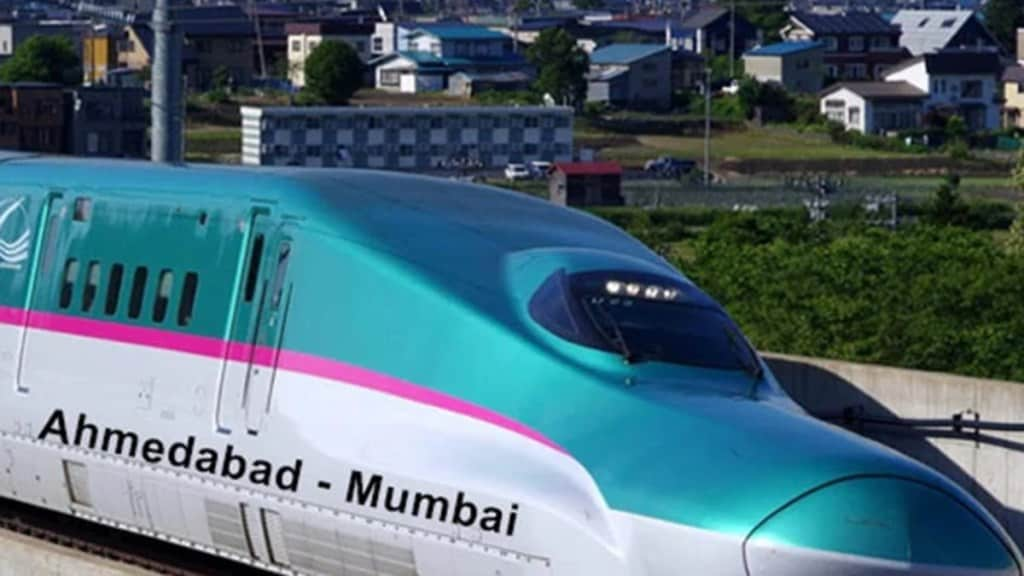While the work on an indigenous prototypes of high-speed rolling stocks has boosted hopes of “Indian bullet trains” hitting the tracks over the next few years, the proposed seven new high speed rail (HSR) projects could face serious financing hurdles, officials said.
While the ongoing Mumbai-Ahmedabad high speed rail (MAHSR) project is being funded by the government of Japan through Japan International Cooperation Agency (JICA), finances for the new set of projects are yet to be tied up. Use of indigenous trainsets is expected to reduce costs of these projects compared to MAHSR, which employs Shinkansen high-speed technology. Yet, financing options seem limited at this juncture, according to the sources.
International funding for the new projects would come at a mich higher cost than JICA loans for MAHSR, they said. “In case of MAHSR, the JICA provided loans at a nominal interest of 0.1% because the Japanese were selling their Shinkansen technology to India. It’s likely that international agencies would fund these seven projects at higher interest rates or ask India to abandon the plans for indigenous high-speed trainsets, and buy rolling stock from global companies like Siemens. Otherwise, what is the incentive for them to fund such large projects?,” the official said.
The railways, with little operational surplus with it, and relying heavily on budget funds for its massive capex requirements, have no option but to resort to multilateral lending for the high-speed rail projects. “The railways cannot fund these projects on its own, and would need assistance from international agencies like Asian Development Bank and KfW Development Bank,” the official said, on condition of anonymity.
As part of the national infrastructure project (NIP), the ministry of railways has identified seven high-speed corridors. These include routes such as Delhi to Varanasi (813 km), Delhi to Ahmedabad (872 km), Mumbai to Nagpur (767 km), Mumbai to Hyderabad (671 km), Chennai-Bengaluru-Mysore (464 km), Delhi-Chandigarh-Amritsar (476 km), and Varanasi-Howrah (752 km). The detailed project reports on at least four of these projects have been submitted.
Though the ministry has categorically said that the HSR projects are highly capital-intensive, the decision to sanction any such project depends on many factors such as outcome of detailed project report (DPR), techno-economic feasibility, availability of resources and financing options. Official said that the seven projects are likely to get priority since the Bharatiya Janata Party’s election manifesto promised to expand the bullet train services across the country. Recently, the prime minister Narendra Modi said that India will soon get its first bullet train while emphasising the country’s growing demand for high-speed trains. “The MAHSR will serve as a pilot project as the government is planning to roll out more high-speed rail projects to achieve its Viksit Bharat mission,” he said.
The MAHSR project is being executed with official development assistance loan assistance from JICA at an interest of 0.1%. The 81% of the construction and procurement costs are funded by JICA while the remaining financial burden is being shared among the central government, and governments of Maharashtra and Gujarat.
Due to the funding from JICA, the MAHSR corridor will be using the Japanese Shinkansen high-speed technology which costs almost double of the local rolling stocks prototypes that will be manufactured by state-owned BEML. In October last year, the Integral Coach Factory (ICF) awarded a contract to design, manufacturing and commissioning of two high-speed trainsets to BEML. The two indigenously-developed trainsets , comprising of 8 cars each and capable of reaching speeds of 280 km per hour, will cost Rs 866.87 crore with each car priced at Rs 27.86 crore.
The first prototype, to be developed in the next two years, will undergo trials on the Mumbai-Ahmedabad high-speed corridor.

